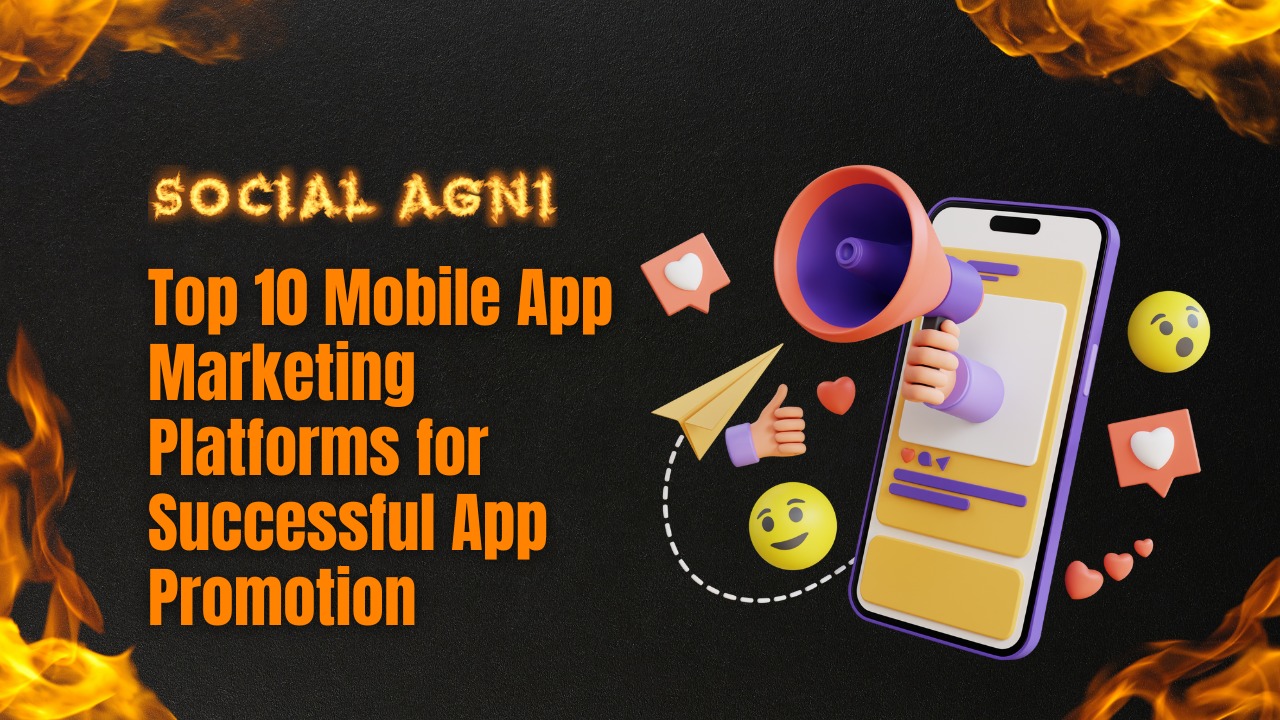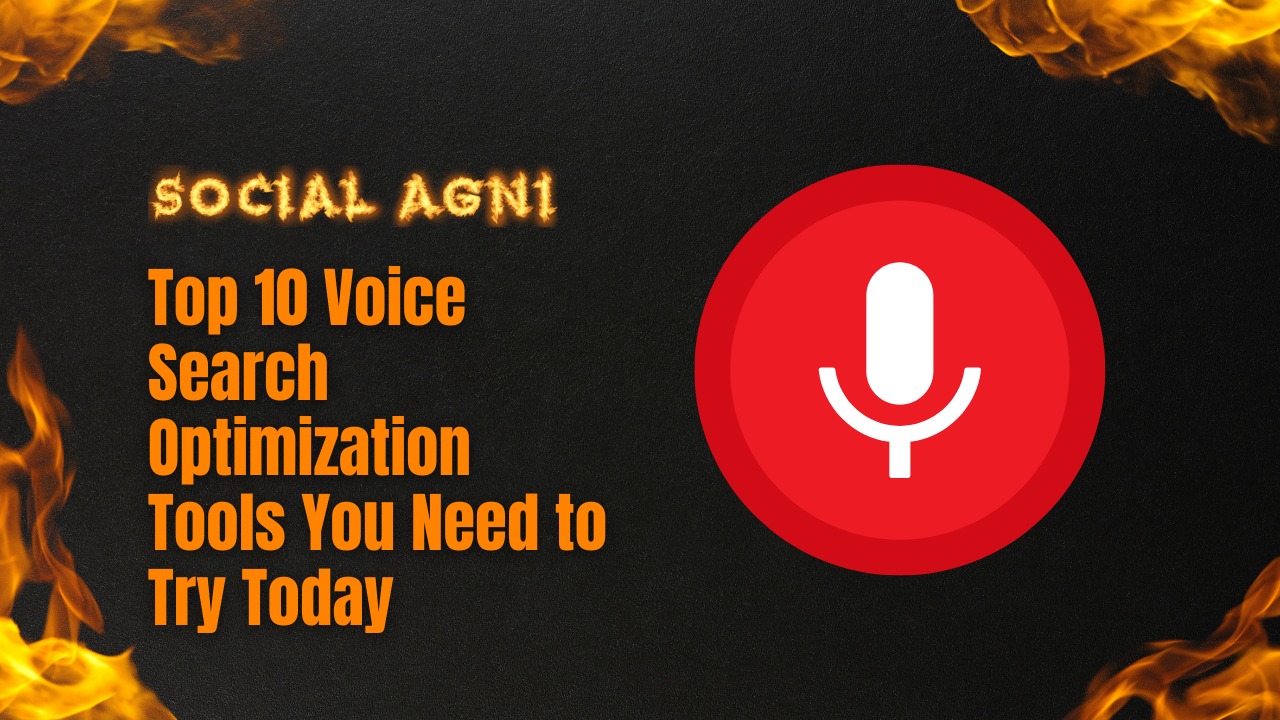Understanding and meeting consumers’ requirements is essential in today’s competitive business environment. Customer segmentation helps. Customer segmentation is grouping customers by demographics, behaviors, interests, and purchasing habits. Businesses may segment clients to better understand their target group, generate personalized marketing efforts, and offer personalized customer experiences. Manually analyzing and categorizing large amounts of client data is time-consuming and difficult. Customer segmentation tools help clever business owners efficiently and successfully segment their customers. Advanced algorithms and data analytics automatically find trends and categorize clients based on preset parameters. Customer segmentation tools give firms meaningful data to improve marketing and strategic decision-making. These technologies let company owners learn clients’ preferences, forecast their behavior, and send customized communications and offers. Personalization enhances client connections, satisfaction, loyalty, and business growth. This post will discuss five client customer segmentation tools that wise business owner should consider adding to their marketing arsenal. These tools were chosen for their popularity, usefulness, and segmentation insights. We’ll discuss each tool’s capabilities, benefits, and how they might improve consumer segmentation methods. To compete in today’s market, you must understand your clients and customize your marketing efforts. Let’s explore how customer segmentation tools may transform your business, boost customer engagement, and boost your success. 5 Must-Have Customer Segmentation Tools for Smart Business Owners Google Analytics Businesses utilize Google Analytics to segment customers. This application helps savvy business owners analyze client behavior, acquire data, and make marketing decisions. Google Analytics tracks and analyses website traffic. A tracking code on your website can reveal your users’ demographics, hobbies, and browsing behavior. This data lets you segment your audience by age, gender, geography, and interests. This segmentation lets you design focused marketing campaigns for certain consumer categories, improving conversions and sales. Google Analytics allows extensive segmentation beyond demographic and interest-based. Create unique segments based on online behaviors like buying, subscribing, or abandoning a basket. Granular segmentation lets you analyze client behavior and customize marketing campaigns. Google Analytics offers robust reporting and data visualization. Conversion rates, bounce rates, and average session time may be reported for each client category. These insights help you discover high-performing categories and allocate marketing efforts. Google Analytics integrates with Google Ads and Google Search Console, making it useful. Linking platforms improves client segmentation. Google Analytics may help you optimize ad targeting, find the most valuable keywords, and improve SEO. Smart business owners use Google Analytics for consumer segmentation. Demographic monitoring, custom segmentation, reporting, and interaction with other Google products help organizations understand their customers, improve marketing tactics, and boost outcomes. Google Analytics lets you maximize client segmentation and grow your business. HubSpot HubSpot is a strong marketing and CRM software with customer segmentation features. HubSpot capabilities allow savvy company owners to segment their audience and create personalized experiences to attract, engage, and delight clients. HubSpot’s Smart Lists categorize customers. Your contact attributes, behaviors, and engagement levels automatically refresh these dynamic lists. Smart Lists let you segment leads by status, geography, industry, or website behaviors. This degree of segmentation lets you target particular client categories with relevant and engaging messaging. HubSpot Workflows automates segmentation and nurturing. Workflows let you build custom actions based on criteria or behaviors. For instance, you may create a process that sends customized emails to clients who abandoned their shopping carts or allocates leads to sales reps based on industry or lead score. Automating these procedures lets you send timely and appropriate communications to diverse target segments, improving their experience and boosting conversions. HubSpot works with email marketing and social media platforms to enhance its segmentation capabilities. These connectors let you get data from many sources and optimize client groups. HubSpot’s CRM also consolidates client involvement history. This data may be used to categorize clients by the likelihood of conversion or special attention. Understanding each segment’s requirements and preferences allows you to create tailored marketing and offers that build connections and loyalty. Mixpanel Businesses use Mixpanel’s advanced consumer segmentation features. Mixpanel helps savvy business owners understand their customers and optimize their marketing tactics by recording events and analyzing user behavior. Event tracking powers Mixpanel’s client segmentation. This tool lets you track and analyze user behavior on your website or app. You may learn how various customer groups use your product or service by identifying and recording key business events. Customer segmentation relies on this data. Mixpanel enables behavioral segmentation beyond demographics. Segment your audience by activities, behaviors, and preferences. You can categorize consumers who have purchased, finished a specified onboarding procedure, or used certain product features. These behavioral categories let you customize marketing, offers, and user experiences for distinct consumer groups, improving engagement and conversions. Mixpanel offers funnel analysis and event monitoring. Funnels show you how users interact with your website or app. Tracking conversion rates at each funnel phase helps uncover user drop-offs and issues. This data optimizes user experience and identifies conversion-boosting initiatives. Cohort analysis from Mixpanel lets you group clients by shared traits or behaviors across time. Cohorts show how marketing campaigns, product improvements, and user behaviors affect customer retention, engagement, and income. Cohort data can help you tailor marketing to specific client segments. Mixpanel also lets you create detailed reports and dashboards with crucial KPIs for each consumer category. These insights let you assess marketing performance, discover trends, and optimize consumer segmentation methods. Finally, Mixpanel provides sophisticated consumer segmentation options for event tracking, behavioral analysis, and cohort analysis. These features help savvy business owners analyze their customers, optimize their marketing tactics, and create personalized experiences that boost engagement and conversions. Customer segmentation may boost business success with Mixpanel. Salesforce Marketing Cloud Salesforce Marketing Cloud delivers advanced customer segmentation. Salesforce Marketing Cloud’s capabilities let savvy business owners segment their consumer base for personalized and targeted marketing efforts. Salesforce Marketing Cloud’s contact data management is crucial. It stores consumer demographics, preferences, purchase history, and engagement indicators. This data lets you categorize customers by age, geography, purchase behavior, and interaction. Salesforce Marketing Cloud’s customer segmentation includes predictive intelligence. The platform analyses patterns and behaviors to
App success depends on mobile app marketing. Developers and companies are finding it harder to stand out and attract customers in app stores with millions of apps. Mobile app marketing platforms are vital. Mobile app marketing platforms provide tools, tactics, and resources to promote apps. These platforms boost app visibility, engagement, and downloads. They offer data, analytics, and advertising that help app owners target their customers and optimize their marketing efforts. App Annie is a leading app marketing platform. App Annie has market information, app performance tracking, and competition analysis. App Annie helps app owners analyze user behavior, optimize marketing methods, and improve app performance. Google Adverts, another strong platform, lets app developers advertise their apps with search, display, and video adverts. Developers may target users who are actively browsing for apps or display advertising based on their interests and demographics using advanced targeting. Google Ads offers powerful monitoring and analytics capabilities to optimize marketing campaigns. Facebook offers excellent mobile app marketing options. App owners may target demographics, interests, and behavior using Facebook Ads. The platform’s large user base and powerful tracking allow accurate targeting and retargeting of app-interested consumers. Apple Search Ads promotes App Store apps particularly. App owners may bid on keywords to boost exposure and attract people searching for comparable apps. Mobile ad exchange technologies like MoPub and IronSource allow app publishers to monetize their apps by presenting ads from several ad networks and demand sources. These solutions maximize income and user experience with extensive targeting and real-time reporting. Chartboost, Tapjoy, Unity Ads, and Vungle offer gaming app solutions. In-game advertising, incentivized videos, and high-quality video adverts boost user engagement and app installations on these platforms. Game creators can target the proper audience and maximize their ad campaigns using smart targeting. 1. App Annie App Annie is a renowned mobile app marketing platform that helps developers and marketers flourish in the competitive app industry. App Annie has become essential for app marketers due to its extensive range of features and capabilities. App Annie’s market intelligence is crucial. It offers thorough insights into app performance, user behavior, and market trends. App owners may utilize this data to analyze their target audience, user preferences, and growth potential. This market knowledge helps app owners make educated decisions and create efficient marketing strategies to reach their audience. App Annie offers app store optimization (ASO) solutions to boost app store presence. ASO lets app owners optimize metadata, keywords, and screenshots to boost app store search rankings. App Annie’s ASO solutions help boost app exposure, downloads, and users. App Annie offers competitive analyses. App owners may compare downloads, income, and engagement with competitors. This helps app owners assess their market position, strengths and limitations, and tactics to beat the competition. App Annie’s competition analysis helps app owners assess their performance, learn from successful rivals, and distinguish their products. App Annie’s user acquisition capabilities are notable. It helps app owners market and gets new users with advertising and campaign management. App Annie’s advertising tools allow app creators to reach their intended audience via social media, search engines, and ad networks. This boosts app downloads, exposure, and quality of consumers. App Annie also analyses app monetization. Revenue, in-app sales, and subscription models are covered. App owners may optimize their monetization methods, find revenue-boosting possibilities, and make data-driven decisions to maximize app profitability by analyzing this data. 2. Google Ads Google Ads is a powerful mobile app marketing platform that lets developers and marketers advertise their applications throughout Google’s large advertising network. Google Ads helps app owners target and drive app downloads with its broad reach and intelligent targeting. Google advertisements for mobile app marketing use search advertisements, which is a major benefit. App owners may rank high in Google search results for related phrases by establishing appealing ad campaigns and spending on relevant keywords. This boosts app exposure and targeted visitors, increasing downloads. Google Advertisements offers several mobile app marketing-friendly ad forms beyond search advertisements. Display advertisements let app owners advertise their app across a network of websites and mobile applications to attract people who are browsing or using relevant apps. This eye-catching advertising can get people to download the app. Google advertising video advertising is also effective. Video ads for mobile applications are entertaining and successful. App owners may generate engaging video advertising using Google’s video ad platform. This advertising can appear on YouTube, other mobile applications, and the Google Display Network, reaching a large audience. App owners may use sophisticated targeting with Google Ads. They may target consumers by age, gender, and location to display appropriate adverts. Google Ads also lets app owners create bespoke audiences based on user interests, behavior, and past app or website engagements. This detailed targeting guarantees app owners contact consumers most likely to be interested in their app, improving marketing campaigns. Google Ads also provides mobile app marketing campaign tracking and analytics. App owners may monitor impressions, clicks, app installations, and in-app behaviors. This data lets them assess ad performance, optimize campaigns, and make data-driven app marketing strategy decisions. 3. Facebook Ads Facebook Ads is a powerful mobile app marketing platform that gives developers and marketers several opportunities to promote their apps. Facebook Ads helps app developers target their customers and increase app downloads with its enormous user base and powerful targeting capabilities. Facebook Ads for mobile app marketing benefit from its large user base. App owners can reach billions of Facebook users. This helps app owners promote their software to a huge number of potential consumers. Facebook Ads has mobile app marketing-friendly ad types. Mobile app install ads are effective. These adverts boost Facebook app installation. App owners may develop aesthetically appealing adverts to entice people to download their app. Facebook advertisements include mobile app install advertisements, carousel ads, video ads, and collection ads. These formats help app owners to present their software creatively and engage consumers, boosting app downloads. Advanced targeting is a Facebook Ads highlight. App owners may target adverts by age, gender, location,
The rise of voice search technology has transformed the way people interact with the internet. With virtual assistants like Siri, Alexa, and Google Assistant becoming increasingly popular, optimizing your website for voice search is crucial for staying ahead in the digital landscape. To help you enhance your voice search presence, we have curated a list of the top 10 voice search optimization tools that you need to try today. These tools will not only improve your website’s visibility in voice search results but also enhance the overall user experience. 1. SEMrush Voice Search Analytics SEMrush Voice Search Analytics is a comprehensive tool that enables you to analyze and optimize your content for voice search. It provides valuable insights into voice search trends, featured snippets, and top-ranking voice search queries. With this tool, you can identify keywords and phrases that resonate with voice search users and tailor your content accordingly. Moreover, SEMrush Voice Search Analytics allows you to track your website’s performance in voice search results and compare it with your competitors. By monitoring key metrics such as visibility, ranking positions, and organic traffic generated from voice search, you can assess the effectiveness of your voice search optimization strategy. This tool also provides recommendations on how to improve your content for better voice search performance. 2. Google’s Voice Search Quality Rater Guidelines Google’s Voice Search Quality Rater Guidelines are an invaluable resource for understanding how Google evaluates voice search results. These guidelines provide detailed instructions for human raters who assess the quality of voice search responses. By familiarizing yourself with these guidelines, you can gain insights into Google’s ranking factors and align your content accordingly. The guidelines emphasize the importance of providing accurate, relevant, and concise answers to voice search queries. They also highlight the significance of natural language, user intent, and context. Adhering to these guidelines can help you create content that satisfies user expectations and aligns with Google’s standards, thereby increasing your chances of appearing in voice search results. 3. AnswerThePublic AnswerThePublic is a popular tool that helps you discover the most commonly asked questions related to your industry or niche. It generates an extensive list of queries based on the autocomplete suggestions from search engines like Google. By incorporating these questions and answers into your content, you can address the specific queries that voice search users are likely to ask, thereby increasing your visibility in voice search results. AnswerThePublic also provides valuable insights into the variations and related keywords associated with your target queries. This information enables you to create comprehensive and informative content that covers a wide range of user inquiries. By catering to diverse search intents, you can position your website as a reliable source of information for voice search users. 4. LongTailPro LongTailPro is a popular keyword research tool that specializes in finding long-tail keywords. With voice search often being more conversational and question-based, targeting long-tail keywords becomes crucial. LongTailPro provides detailed keyword analysis, competition metrics, and search trends, helping you uncover valuable long-tail keywords for voice search optimization. By focusing on long-tail keywords, you can cater to specific user intents and address niche topics. LongTailPro’s keyword analysis helps you identify low-competition keywords that are highly relevant to your content. By incorporating these keywords strategically, you can improve your chances of ranking well in voice search results and attract targeted traffic to your website. 5. WordStream WordStream is a comprehensive digital advertising platform that offers a variety of tools to optimize your voice search strategy. While primarily known for its pay-per-click (PPC) advertising features, WordStream also provides valuable resources for voice search optimization. One of the key features of WordStream is its keyword research tool. It enables you to identify relevant keywords and phrases that align with voice search queries. By understanding the language and phrases used by voice search users, you can create content that directly addresses their needs and queries. Additionally, WordStream offers a range of features to enhance your overall search engine optimization (SEO) efforts. It provides recommendations for optimizing your website’s structure, meta tags, and content to improve your visibility in both text-based and voice-based searches. By implementing these recommendations, you can enhance your website’s chances of appearing in voice search results. 6. ClearScope ClearScope is a powerful content optimization tool that can greatly benefit your voice search optimization efforts. This tool focuses on providing data-driven insights to help you create high-quality content that resonates with both users and search engines. ClearScope utilizes artificial intelligence and natural language processing to analyze search engine result pages (SERPs) and identify the most relevant keywords and topics for a given query. By understanding the language patterns and context of voice search queries, ClearScope helps you optimize your content to align with user intent. 7. Hit Tail Hit Tail is a unique keyword research tool specifically designed to help you optimize your content for long-tail keywords, making it a valuable addition to your voice search optimization toolkit. Long-tail keywords are particularly relevant for voice search queries due to their conversational nature. The core functionality of Hit Tail revolves around analyzing your website’s existing traffic and generating long-tail keyword suggestions based on actual search queries that are driving visitors to your site. By identifying these specific queries, you can gain insights into the language and phrasing that users are using when conducting voice searches. 8. Term Explorer Term Explorer is a robust keyword research tool that provides comprehensive insights and analysis to optimize your content for voice search queries. It offers a wide range of features that help you identify relevant keywords, understand user intent, and track your performance in voice search results. One of the key features of Term Explorer is its ability to generate long-tail keywords. Long-tail keywords are crucial for voice search optimization as they often reflect the conversational nature of voice queries. Term Explorer provides an extensive list of long-tail keywords related to your industry or niche, enabling you to target specific user intents and create content that directly addresses their
In cutting-edge fast-paced digital world advertising and marketing automation has ended up an important tool for agencies of all sizes. By leveraging technology to automate repetitive marketing responsibilities, corporations can save time, increase efficiency, and deliver personalized experiences to their customers. With the plethora of advertising automation systems available, deciding on the right one for your enterprise can be overwhelming. In this article, we will explore some of the top advertising automation systems that may help streamline your advertising efforts and drive results. HubSpot HubSpot is a complete advertising automation platform that gives a wide range of functions to assist businesses attract, have interaction, and delight customers. One of HubSpot’s key strengths is its all-in-one technique, combining CRM, advertising automation, income, and customer service equipment right into a unified platform. This integration allows for seamless data sharing and collaboration across teams, resulting in a cohesive and streamlined marketing strategy. With HubSpot, you can create personalized email campaigns tailored to specific customer segments. The platform provides pre-built email templates, automated workflows, and A/B testing capabilities, making it easy to optimize your email marketing efforts. Additionally, HubSpot’s lead nurturing tools enable you to automate the process of engaging with leads and guiding them through the sales funnel. By delivering relevant content and timely follow-ups, you can increase conversions and drive revenue. HubSpot’s content management system (CMS) allows businesses to build and optimize landing pages, blogs, and website content. Its user-friendly drag-and-drop editor requires no coding knowledge, empowering marketers to create engaging and visually appealing web pages. The CMS also includes SEO optimization tools, helping your content rank higher in search engine results and attract organic traffic. Furthermore, HubSpot offers social media management capabilities, allowing you to schedule and publish posts across multiple platforms from a single dashboard. You can track engagement metrics, monitor brand mentions, and analyze social media performance, providing valuable insights to refine your social media strategy. With HubSpot’s robust analytics and reporting capabilities, you can measure the achievement of your advertising campaigns and make data-driven choices. The platform provides comprehensive metrics on website traffic, email performance, lead generation, and customer behavior. These insights allow you to optimize your advertising efforts, perceive areas for improvement, and allocate assets successfully. Marketo Marketo is an effective advertising and marketing automation platform that caters to the needs of each B2B and B2C marketer. Known for its advanced capabilities, Marketo empowers businesses to create personalized, targeted campaigns that drive engagement and conversions. One of Marketo’s standout features is its lead management functionality. The platform allows you to capture, nurture, and score leads based on their interactions and behaviors. By implementing lead scoring models, you can prioritize leads and focus on those with the highest potential, maximizing your sales efforts. Marketo also provides lead nurturing tools, enabling you to automate the delivery of relevant content and personalized messages at each stage of the buyer’s journey. In addition to lead management, Marketo offers robust email marketing capabilities. You can create visually appealing email templates, segment your audience, and automate email campaigns based on triggers or predefined workflows. Marketo’s A/B testing functionality allows you to experiment with different subject lines, content variations, and send times to optimize email performance and increase open and click-through rates. Social media marketing is another area where Marketo excels. The platform enables you to schedule, publish, and analyze social media posts throughout more than one platform. You can monitor conversations, engage along with your audience, and measure the impact of your social media efforts.Marketo’s social listening feature allows you to track brand mentions, hashtags, and industry trends, providing valuable insights for your marketing strategy. Marketo’s analytics and reporting capabilities offer in-depth insights into your marketing performance. You can track key metrics such as campaign ROI, conversion rates, and revenue attribution. Marketo’s integration with Salesforce CRM allows for seamless data synchronization between marketing and sales teams, facilitating better alignment and collaboration. ActiveCampaign ActiveCampaign is a versatile marketing automation platform that caters to businesses of all sizes. It offers a wide range of automation features, making it a popular choice for marketers looking to streamline their marketing efforts. ActiveCampaign’s email marketing capabilities allow you to create personalized email campaigns, segment your audience, and automate email sequences. The platform provides a visual automation builder, where you can design complex workflows based on customer behavior and triggers. This allows you to deliver targeted messages to the right audience at the right time, increasing engagement and conversions. One of ActiveCampaign’s key strengths is its CRM functionality. The platform provides a robust customer database, allowing you to store and manage customer information, track interactions, and gain insights into individual customer journeys. This holistic view of your customers enables you to deliver personalized experiences and build stronger relationships. ActiveCampaign also offers lead scoring and tagging features, helping you identify the most engaged and qualified leads. By assigning scores to various actions and behaviors, you can prioritize follow-ups and tailor your marketing efforts to individual lead preferences. The platform’s tagging system allows for advanced segmentation, ensuring that you can deliver highly relevant content and offers to specific audience segments. In addition to email marketing and CRM, ActiveCampaign provides automation features for SMS marketing, site tracking, and social media integration. The platform’s SMS marketing capabilities allow you to engage with your audience through text messages, providing another channel to nurture leads and drive conversions. Site tracking enables you to monitor customer behavior on your website, gaining valuable insights into their interests and preferences. Integrations with popular social media management platforms allow you to automate social media posting and track social media interactions. GetResponse GetResponse is a popular marketing automation platform that offers a wide range of features to help businesses streamline their marketing efforts and drive better results. With its user-friendly interface and complete set of tools, GetResponse is suitable for both small companies and large businesses. One of the key features of GetResponse is its email marketing capabilities. The platform provides a drag-and-drop e mail editor, making it smooth
Online reputation management is essential to corporate success in the digital era. The Internet and social media affect a company’s reputation. Online reputation management involves actively establishing a favorable brand image, preserving brand integrity, and gaining consumer trust. Strong internet reputations may boost a firm. It may retain consumers, attract new ones, and influence purchases. A bad internet reputation may damage credibility, client trust, and profitability. Thus, firms must invest in effective online reputation management technologies and techniques. To monitor, evaluate, and govern brand narratives online, several online reputation management solutions are available. These technologies let businesses monitor online reviews, detect concerns, and connect with consumers to maintain a favorable online presence. Online reputation monitoring is vital. These technologies monitor brand mentions on social media, news sites, blogs, and forums. Companies can immediately spot bad brand mentions and sentiment research and take action. Online reputation management also requires social media management tools. Businesses must actively connect with their audience, reply to client inquiries, and actively maintain their social media presence due to the extensive usage of social media. Schedule postings, measure interaction data, and analyze brand sentiment using social media management tools. Businesses must monitor and manage social media and consumer evaluations and comments. Review and feedback management technologies let firms gather and manage customer evaluations from several platforms, respond to feedback quickly, and address concerns to maintain a favorable brand image. Online reputation management includes crisis preparation. Online crisis management technologies enable companies to monitor and respond to emerging concerns, limit bad information, and safeguard their brand reputation during difficult times. SEO is vital to online reputation management. SEO tools increase search engine rankings, brand visibility, and online presence. Companies may eliminate undesirable and detrimental content from search engine rankings by using efficient SEO methods. Brand monitoring and sentiment analysis technologies also reveal customer brand perception. These tools help companies understand how their brand is regarded, identify areas for development, and make educated reputation-boosting decisions. Online Reputation Monitoring Tools Brand reputation management relies on internet reputation monitoring technologies. These solutions let businesses monitor social media, news websites, blogs, forums, and review sites. By regularly monitoring brand mentions and sentiment analysis, firms may swiftly discover and manage unfavorable or detrimental information. Online reputation monitoring tools: Google Alerts Google’s free product delivers email notifications when it indexes new content related to a term or brand name. Brand, product, industry, and other relevant phrases can be set up as alerts. Google Alerts lets companies monitor web mentions and brand sentiment. Brand24 Brand24 monitors brand references online in real-time. Sentiment, influencer, and competitor analyses are available. Brand24 lets organizations measure social media mentions, hashtags, consumer sentiment, and audience engagement. Mention Mention lets companies watch brand mentions and keywords in real-time on social media. Users may watch social media, news, blogs, and more on its easy interface. Mention provides sentiment analysis, competition analysis, and reputation management reports and notifications. Hootsuite This famous social media management program also monitors. Track brand mentions, industry keywords, and hashtags across social media using streams. Hootsuite helps companies manage their reputation by tracking brand mentions, engaging with customers, and collaborating with colleagues. Businesses may learn about their brand’s internet reputation using these tools. Businesses may improve their internet reputation by monitoring brand mentions, sentiment, and trends. Social Media Management Tools Business reputation management requires social media management technologies. These solutions simplify scheduling, tracking brand mentions, audience engagement, and social media performance analysis. Popular social media management tools: Buffer Businesses use Buffer to schedule and publish posts on Facebook, Twitter, Instagram, LinkedIn, and Pinterest. Its user-friendly design, content planning calendars, and analytics track post performance and interaction. Businesses can communicate with customers and track brand mentions in real-time with Buffer. Sprout Social This social media management tool has several reputation management capabilities. It lets companies plan posts, track brand mentions, communicate with consumers, and assess social media performance. To understand the brand impression and sentiment, Sprout Social offers powerful reporting, analytics, sentiment analysis, and social listening. Hootsuite Hootsuite monitors online reputation and manages social media. It lets companies manage numerous social media accounts, plan posts, monitor brand mentions, communicate with audiences, and measure social media statistics. Hootsuite helps organizations manage their social media reputation by providing a central dashboard. HubSpot This marketing automation software manages social media. Businesses may schedule and publish social media posts, monitor brand mentions, communicate with followers, and track results. HubSpot’s social media analytics and reporting tools assess brand reputation. These social media management tools allow businesses to manage their social media presence and communicate with their audience from one place. Businesses may manage their online reputation and respond to consumer feedback by scheduling postings, tracking brand mentions, and assessing social media performance. Review and Feedback Management Tools Businesses need review and feedback management technologies to handle client feedback across platforms. These technologies let organizations gather, monitor, and analyze customer reviews to fix concerns, engage consumers, and maintain a favorable brand reputation. Review and feedback management tools: Trustpilot Trustpilot helps businesses collect and publish consumer reviews. Review invites, monitoring, and statistics are available. Trustpilot lets companies interact with customers, reply to reviews, and highlight good comments to create trustworthiness. Yotpo A complete review and consumer feedback tool. It collects and manages customer reviews, generates reviews, analyzes sentiment, and provides consumer insights. Yotpo helps businesses collect feedback, reply to reviews, and promote with favorable ratings. ReviewTrackers ReviewTrackers lets businesses collect and track client reviews from several internet platforms. It tracks reviews, analyzes sentiment, and manages responses. ReviewTrackers gives organizations a dashboard to track and respond to customer evaluations, providing proactive reputation management. BirdEye A complete customer experience and reputation management platform. Review monitoring, sentiment analysis, review production, and customer feedback management are available. BirdEye helps businesses gather feedback, respond to reviews, and improve their online reputation by utilizing positive customer experiences. These solutions help organizations manage their internet reputation by gathering consumer input, correcting issues, and highlighting favorable reviews. Businesses may improve customer satisfaction, brand reputation,




